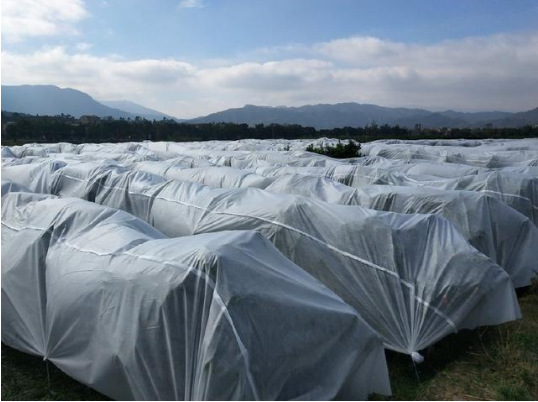The wind blows and the cold is heavy, and the winter is almost on the road, so before the arrival of winter, what measures should we take to survive the winter?

In various greenhouse structures, the enclosure structure of the greenhouse is often composed of a variety of materials due to the needs of structure and installation equipment. In addition to the large area of daylighting covering materials, the enclosure structure of the greenhouse also includes brick walls at the bottom, concrete ring beams, metal columns on the outer wall, plastic film or alloy supporting external daylighting covering materials, greenhouse frame system, roof frame system Wait.
Due to the different types of construction materials for these greenhouses, their thermal and thermal insulation properties are also different. Relatively large thermal conductivity materials, heat is easily conducted through. We usually call the parts with lower thermal insulation performance "cold bridge". The cold bridge is not only the main channel for heat conduction, but also the place where condensate is easily generated. They are the weak link of heat preservation. Therefore, taking measures to reduce the heat loss of the cold bridge is an important means for the energy saving and heat preservation of the greenhouse. A qualified greenhouse should pay attention to the treatment of these cold bridges during the construction.
Cold-proof non-woven fabric is a new generation of environmentally friendly materials, with good strength, breathable and waterproof, environmentally friendly, flexible, non-toxic, tasteless, and cheap. It is a new generation of environmentally friendly materials, with the characteristics of waterproof, breathable, flexible, non-combustible, non-toxic, non-irritating, and rich in color. If the material is naturally decomposed outdoors, its longest life span is only 90 days, and it decomposes within 5 years when placed indoors. It is non-toxic, odorless, and contains no leftover substances when burned, so it does not pollute the environment, so environmental protection comes from this . Non-woven products are rich in color, bright and lively, fashionable, environmentally friendly, versatile, beautiful and generous, with diverse patterns and styles, and are lightweight, environmentally friendly, and recyclable. They are internationally recognized as environmentally friendly products that protect the earth's ecology.



 电话:+860512-57886027
电话:+860512-57886027 邮箱:
邮箱: 地址: Room 1902, XinDuYinZuo, No. 177, Changjiang Middle Road, Kunshan, Jiangsu
地址: Room 1902, XinDuYinZuo, No. 177, Changjiang Middle Road, Kunshan, Jiangsu